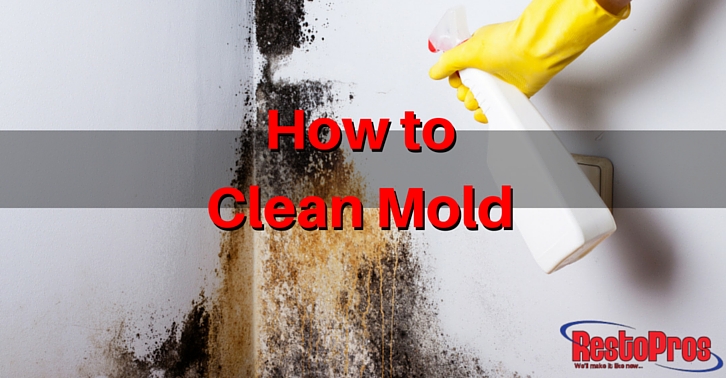 To start, if you’re dealing with a mold infestation that’s greater than a square foot (a sizeable infestation), you should always call a professional. Large mold infestations are usually deeper than you realize and can permeate ventilation systems, storage containers, carpet matting, and insulation inside your walls. But, small infestations of mold and mildew can be cleaned up easily, but it may take a little sacrifice along the way.
To start, if you’re dealing with a mold infestation that’s greater than a square foot (a sizeable infestation), you should always call a professional. Large mold infestations are usually deeper than you realize and can permeate ventilation systems, storage containers, carpet matting, and insulation inside your walls. But, small infestations of mold and mildew can be cleaned up easily, but it may take a little sacrifice along the way.
Preparation
First, you need to know where the mold is, and make sure that the problem isn’t larger than you expect it to be. Examine the surrounding area and see if you can figure out why there’s mold growing. Is there a water source nearby or has it simply been extremely humid due to a rainstorm? Be sure to take steps to remedy the problem while you’re working on cleaning up. Fix any leaks or purchase a dehumidifier for when it rains.
You’ll need to get supplies together for dealing with the mold itself. Always wear a mask and gloves when dealing with mold. Contact with spores can lead to skin irritation and breathing in mold spores is hazardous to your health. You’ll also want a bucket of warm, soapy water or some kind of cleaning solution. Use a dish detergent, vinegar, hydrogen peroxide, or baking-soda solution when cleaning up small mold infestations.
Make sure that the infected surface is something that can be cleaned. Porous surfaces are going to be difficult to clean out. Sheetrock, wood, and insulation are all going to need to be replaced. If you are going to clean the surface, make sure it’s a tile surface or a non-porous plastic.
Cleaning
Distilled white vinegar is a great solution for dealing with mold. Filling a spray bottle with vinegar, a mix of water and 3% hydrogen peroxide, or a mixture of baking soda and water (do not mix all three) will create an effect anti-fungal treatment. Simply spray the surface thoroughly and wipe away the mold. After you’ve cleaned the surface, repeat the process to make sure you’ve removed all of the mold.
The process is the same for dish detergents. Use warm, soapy water to clean away the infected area. Allow the surface to dry and repeat the process. Any fabrics or clothes should be washed separately from other clothing. Use warm water and detergent, then allow the fabric to dry.
Be sure to ventilate any rooms where mold was found and keep the room as dry as possible. Clean up any water spills and use a desiccant or dehumidifier to remove excess moisture from the room. Monitor the area closely for the next week to make sure that the infestation doesn’t return. Finally, if an item does not appear salvageable, toss it immediately. Holding onto a mold-ridden item that you can’t save will only allow more spores to spread. It’s better to sacrifice one item than to lose everything when the mold infestation spreads to your walls and other belongings.
Don’t forget to follow RestoPros on Facebook, Twitter, LinkedIn, and Google+ for new Updates, News, and Discounts!
